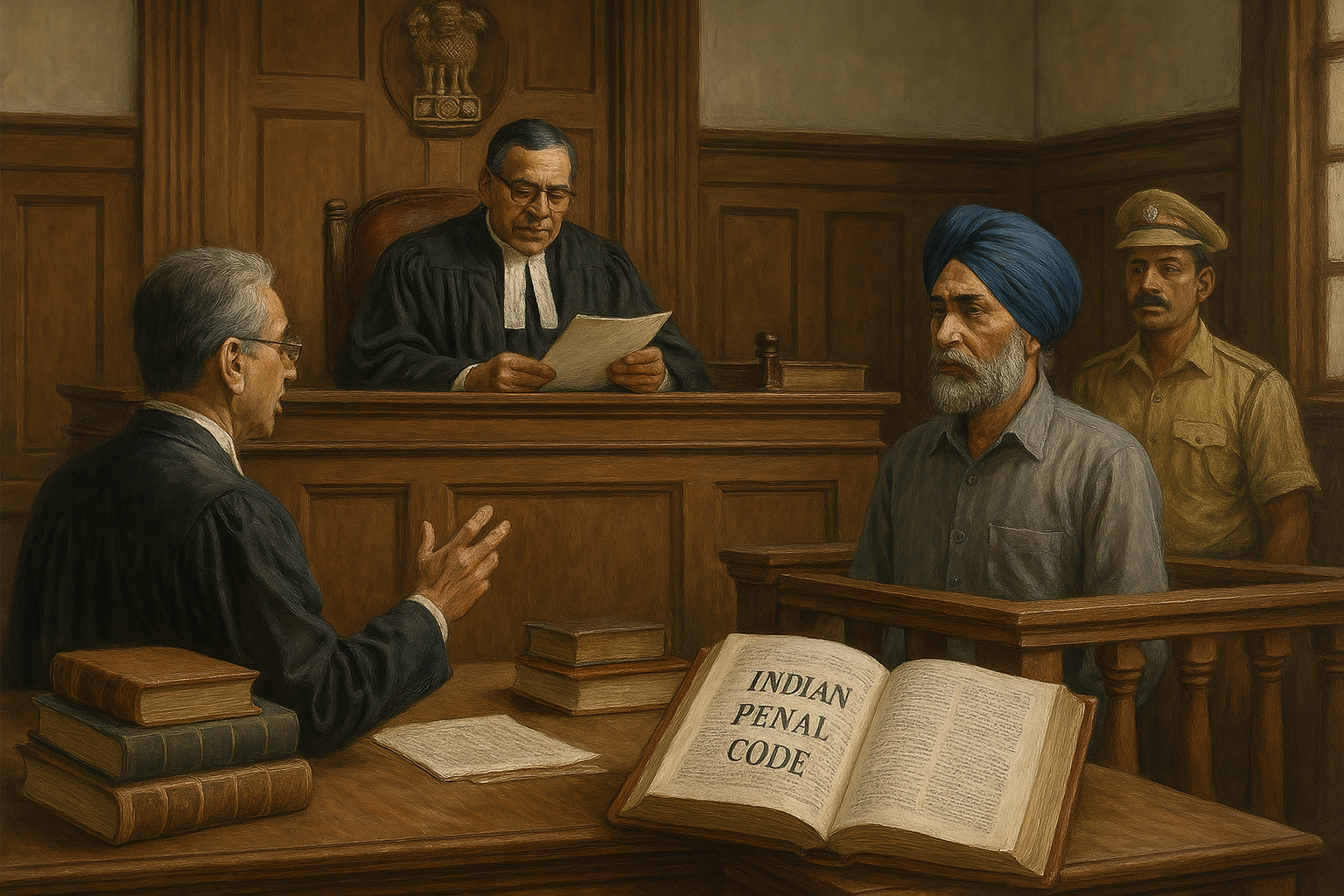
Kapur Singh v. State of PEPSU:
A Landmark Judgment in Indian Criminal Law
Introduction
The case of Kapur Singh v.
State of PEPSU is a significant ruling in Indian criminal law that
highlights the fine line between culpable homicide not amounting to murder
(Section 299 of IPC) and murder (Section 300 of IPC). This judgment,
delivered by the Supreme Court of India on September 15, 1954, remains
crucial for understanding the principles of criminal intent, premeditation,
and proportional punishment.
This case is often cited in law
schools and courts to illustrate how courts interpret intent and severity of
an act in deciding whether a homicide amounts to murder or culpable
homicide. The judgment also plays a critical role in sentencing principles
and has set an important precedent in Indian jurisprudence.
Background of the Case
1. The Historical Context
During the early 1950s, the Patiala
and East Punjab States Union (PEPSU) was a newly formed Indian state. The
criminal justice system in the region was still evolving, and cases involving personal
vendettas were common.
2. Socio-Political Conditions
in PEPSU
The post-independence period was
marked by instability and legal uncertainties in many princely states that had
been merged into the Indian Union. Criminal disputes, often influenced by
family rivalries and land disputes, were frequent.
3. Parties Involved
- Kapur Singh (Appellant): Accused of causing
the death of the deceased by inflicting multiple injuries.
- State of PEPSU (Respondent): Prosecuting
party.
Facts of the Case
Approximately a year before the
incident, Bachan Singh, the son of the deceased, had inflicted grievous
injuries on Pritam Singh, the son of Kapur Singh. This injury was
severe enough to necessitate the amputation of Pritam Singh's leg, which
fueled Kapur Singh’s desire for revenge.
On September 30, 1952,
Kapur Singh, along with Chand Singh, ambushed the deceased. Chand Singh
restrained the victim while Kapur Singh used a gandasa (a sharp weapon
similar to an axe) to inflict multiple injuries. Notably, the injuries were
directed towards the arms and legs, sparing vital organs.
The prosecution charged Kapur
Singh under Section 302 IPC (murder), while Chand Singh was also convicted.
Legal Issues Presented
The main legal questions in this
case were:
- Did the nature of the injuries inflicted indicate
an intent to kill, thus qualifying as murder under Section 300
IPC?
- Could the case fall under culpable homicide not
amounting to murder (Section 299 IPC), given that vital organs were
not targeted?
- Should the sentence be modified from the death
penalty to life imprisonment?
Arguments from the Prosecution
- Kapur Singh inflicted 18 severe injuries on
the deceased using a deadly weapon.
- The number and severity of the injuries
indicated an intent to kill, fulfilling the criteria under Section
300 IPC (murder).
- The prosecution emphasized that Kapur Singh fled
the scene, showing a guilty conscience.
Arguments from the Defense
- The injuries were not aimed at vital organs,
suggesting that there was no intention to kill.
- The act was committed due to provocation and
past enmity, which should mitigate the charge to culpable homicide
not amounting to murder (Section 299 IPC).
- The absence of instant death indicated that death
was not a certain consequence of the injuries inflicted.
Trial Court Proceedings
The Sessions Court convicted Kapur
Singh under Section 302 IPC (murder) and sentenced him to death. The
court ruled that the severity of the injuries demonstrated an intent to kill.
High Court Proceedings
Upon appeal, the Punjab High
Court upheld the conviction, maintaining that the grievous nature of the
attack indicated a murderous intent.
Supreme Court Proceedings
Kapur Singh filed a special
leave petition before the Supreme Court, limited to the question of
sentencing.
Distinction between Culpable
Homicide and Murder
1. Section 299 IPC - Culpable
Homicide Not Amounting to Murder
A person commits culpable
homicide if he:
- Causes death to cause
death.
- Causes bodily injury likely to cause death.
2. Section 300 IPC - Murder
Culpable homicide becomes murder
when:
- There is intent to cause death.
- The injuries inflicted are such that death is
certain or highly probable.
Judgment by the Supreme Court
The Supreme Court modified
Kapur Singh’s conviction from murder (Section 302 IPC) to culpable
homicide not amounting to murder (Section 304 Part I IPC). The Court
reasoned that:
- The injuries were inflicted on non-vital parts,
suggesting an intent to cause serious harm rather than death.
- The case did not meet the threshold for murder
under Section 300 IPC.
Sentencing and Punishment
The Supreme Court reduced the
sentence from the death penalty to life imprisonment (transportation for
life).
Legal Precedents Set
This case established:
- The importance of intent in distinguishing
murder from culpable homicide.
- That not all severe injuries indicate murderous
intent.
This case is a must-study for
law students as it clarifies the principles of intent, proportionality
in punishment, and judicial interpretation of criminal law.
Conclusion
The case of Kapur Singh v.
State of PEPSU remains a benchmark judgment in Indian criminal law.
It underscores the judiciary’s role in ensuring fair punishment based on
intent rather than the mere severity of an act.
